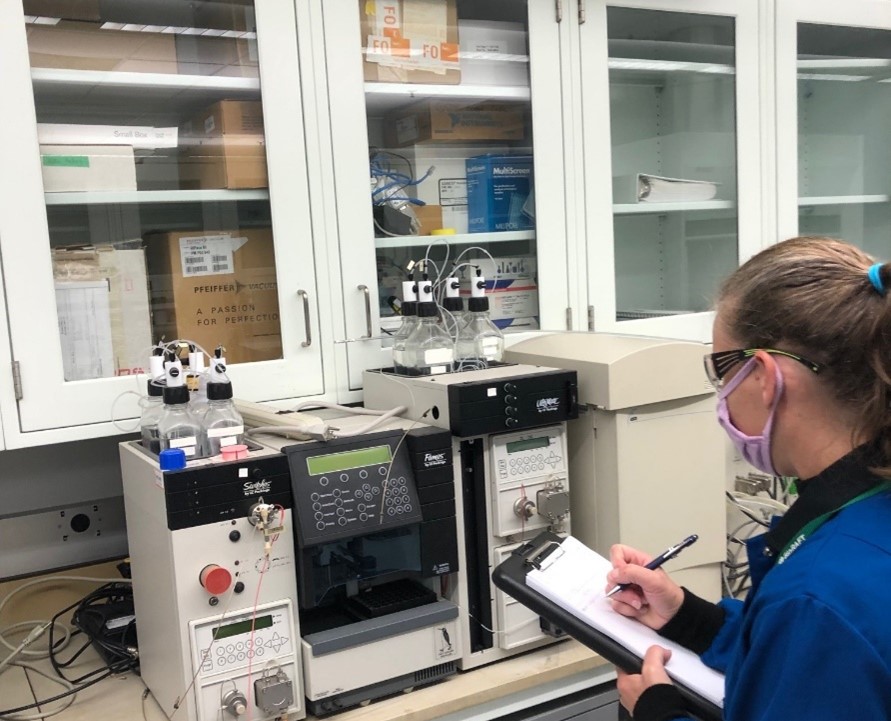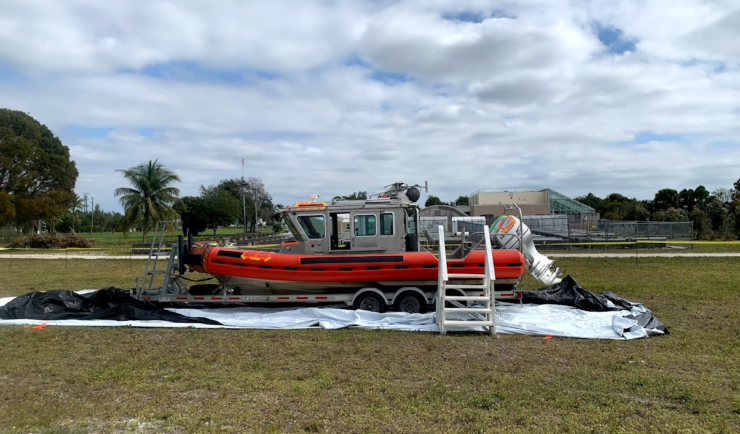- Community Spotlight, Uncategorized
- Safety, Health, & Environmental Compliance
Assessing Methylene Chloride Levels in Laboratories

CSS employee owners supporting the University of Kentucky have started sampling campus laboratories with high use of methylene chloride to assess levels of employee exposure. This effort is in response to the Environmental Protection Agency (EPA) issuing methylene chloride regulations under Section 6(a) of the Toxic Substance Control Act in the Federal Register on May 8, 2024. This regulation prohibits manufacturing, importing, processing, and distributing methylene chloride for all consumer use, and most industrial and commercial uses. The exception to this regulation encompasses 13 different areas, which includes research laboratories. However, with these regulations, EPA has a new occupational exposure limit, called an EPA existing chemical exposure limit (ECEL). The weight average (TWA) ECEL for the standard eight-hour period is 2 parts per million (ppm) with an Action Level of 1 ppm. If an exposure of methylene chloride is at the action level, then the worker needs to be put into a Workplace Chemical Protection Program. This plan outlines how to reduce the employee’s exposure. The rule indicates that initial exposure monitoring should be done by May 5, 2025.
To date, CSS has completed sampling in five laboratories covering six different uses of methylene chloride. The data shows, as of now, that using the chemical fume hood correctly keeps the methylene chloride exposure below the action level. However, operations occurring outside the chemical fume hood, then exposures are at the Action Level or near the eight-hour TWA ECEL.
The next steps are to finish the initial monitoring, as well as working with the laboratories using engineering control or substitutions (if possible) to reduce the exposure to methylene chloride.

Visit EPA’s webpage to learn more about risk management for methylene chloride.
See More CSS Insights

Contributing to Wind Energy Area Designations
The Bureau of Ocean Energy Management (BOEM) recently announced two Wind Energy Areas (WEAs) in the Gulf of Mexico. The WEAs are located off the coasts of Galveston, Texas, and Lake Charles, Louisiana and have the potential to power nearly three million homes. BOEM collaborated with the National Oceanic and Atmospheric Administration (NOAA) to identify…

Responding to HazMat Spills
CSS supports several Centers for Disease Control and Prevention (CDC) campuses throughout the U.S. On-site CSS personnel are trained in hazardous material spill response and clean-up and provide this support within buildings and throughout campuses. As part of our contract with the CDC Hazardous Waste Program, CSS hazmat-trained employee owners are responsible for safely collecting,…

Large-Scale Decontamination Proves Successful
In the spring of 2022, we worked with the U.S. Environmental Protection Agency and the U.S. Coast Guard on a project called Analysis for Coastal Operational Resiliency-Wide Area Demonstration (WAD) which tests large scale decontamination following the release of surrogate bioagents. The team conducted a WAD at a military base in Virginia to test decontamination…
